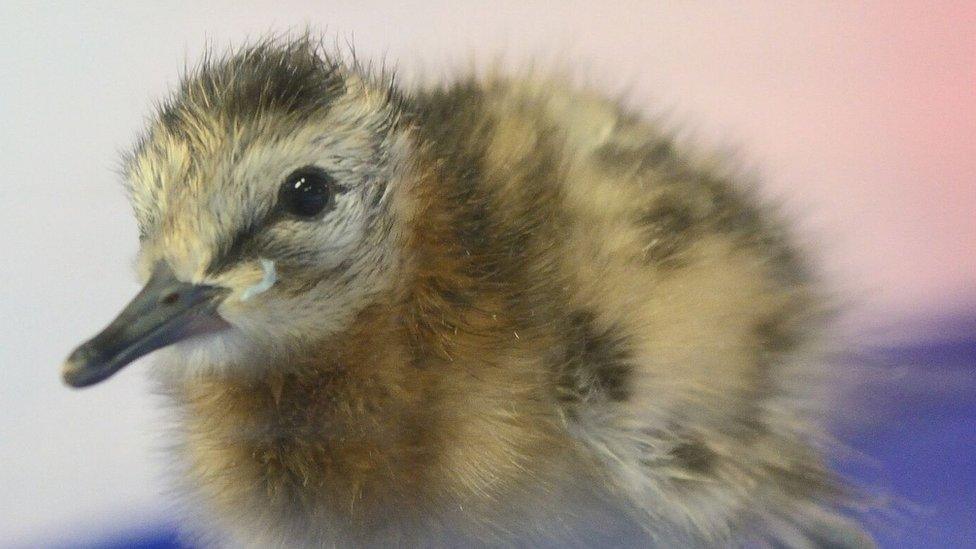Positive signs for Rathlin Island corncrakes
- Published
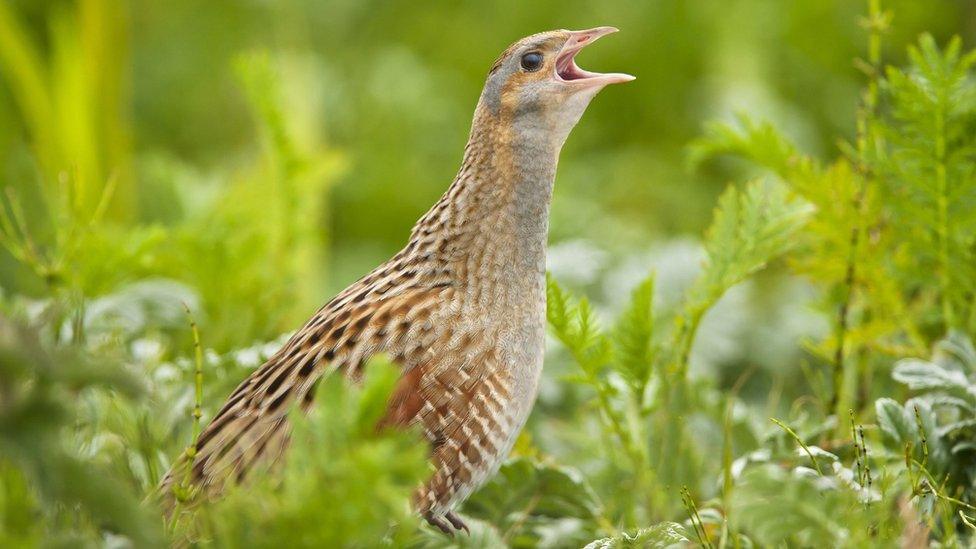
Corncrakes are counted by listening for the call of males
Few people in Northern Ireland will have ever heard the call of the once common corncrake, never mind seen one.
Modern farming methods are blamed as the prime factor for its retreat.
In a rare good news story for the migrant bird, a member of the rail family, it has been heard again on Rathlin Island, off the Antrim coast.
The Royal Society for the Protection of Birds (RSPB) is crossing its fingers that the shy species on its red endangered list has returned to breed.
One of Ireland's rarest birds, the secretive creature has a distinctive call.
Its unmistakable "crex-crex" was heard in Rathlin at the weekend, much earlier in the season than usual, prompting hopes that it has successfully bred on the island where it had been heard and occasionally sighted in recent years.

What is a Corncrake?
A member of the rail family, corncrakes (crex crex) are shy, pigeon-sized birds related to moorhens and coots which breed in Ireland and Britain, and across central Europe migrating to Africa in winter.
They like to settle in early growing tall vegetation including nettles, cow parsley and irises.
There they stay mainly hidden, raising a family in the tall grasses which provide shelter from predators for young corncrakes.
Changes to farming methods, including hay being mowed earlier in the year, have been blamed for the decline.
Farmers are encouraged to cut their fields later in the season and to cut from the centre of fields outwards to give the birds the chance to escape.

RSPB staff and volunteers said the call was heard on the western or upper end of the island, the same location as in the last two years.
The RSPB warden in Rathlin Island, Liam McFaul. said it was fantastic news:
"It's very early in the season to have a bird come back, so this is really encouraging.
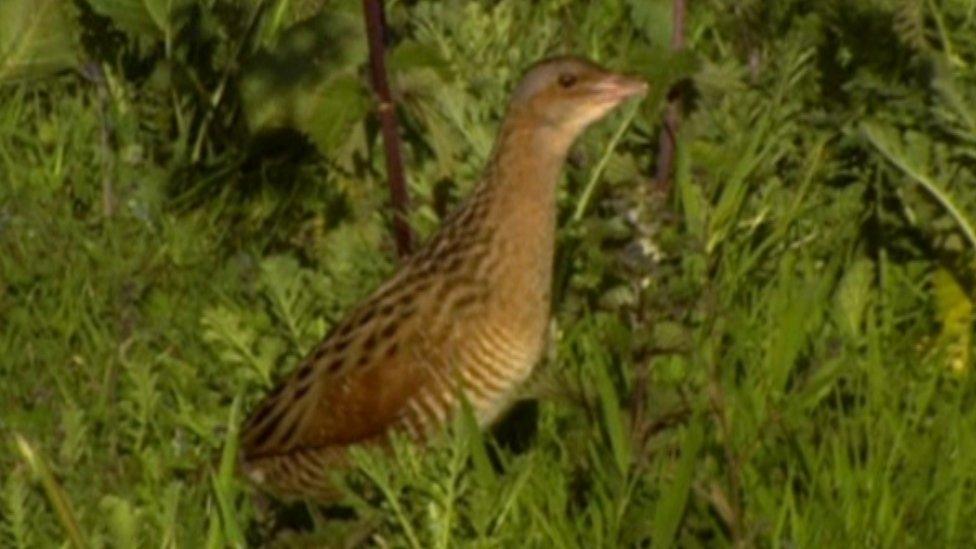
A male corncrake filmed on Rathlin in 2016
"Corncrakes are territorial so they always come back to the place where they were either breeding or where they hatched.
"We'd normally first hear the call in mid-to-late May.
"Only the male corncrake calls, so hopefully this means he is home to roost.
"And because it's so early in the season, its call could attract more corncrakes to Rathlin."
But, the bird's return to Rathlin is no accident, a lot of work has gone into encouraging them to come back.
Over the last 15 years, the RSPB has been encouraging habitat management on the island.
Planting nettles
Volunteers and staff gather nettle roots from across Northern Ireland before ferrying them over for replanting around the edges of hayfields and brambles to provide safe corridors between areas of suitable habitat.
Nettles are one of the earliest plants to have good growth and provide excellent cover for the corncrakes when they arrive.
"All of this work we're doing is for the long-haul and the goal is to have a sustainable corncrake population on Rathlin again," Liam said.
"If we have an established corncrake population here it could be a big tourism benefit for Rathlin.
"It's still early in the season, so it could well be that we hear another corncrake somewhere else on the island.
"That would be a really encouraging sign that the work we're doing for corncrakes is making a difference."

The RSPB's 'red list'
Red is the RSPB's highest conservation priority, with species "needing urgent action".
Red list criteria includes:
Species is globally threatened.
Historical population decline in UK during 1800-1995.
Severe (at least 50%) decline in UK breeding population over last 25 years, or longer-term period (the entire period used for assessments since the first BoCC review, starting in 1969).
Severe (at least 50%) contraction of UK breeding range over last 25 years, or the longer-term period.

Historically, corncrakes were common across Rathlin but they have gone into sharp decline since the 1980s.
By 1989 they stopped returning on their migratory route from Africa as a regular breeder.
They turned up only sporadically since and the last confirmed breeding corncrakes on the island were recorded in 2000.
However, bird was heard calling in 2014 and again in 2016 and 2017.
The last regular breeding birds on mainland Northern Ireland were recorded in 1994 in Fermanagh.
Fermanagh and Tyrone
One lonely male was heard calling in vain for a mate in Tyrone in 2011.
However, the species can still be found in large numbers on the west coast of Scotland and in Donegal, in the Republic of Ireland.
The biggest single island population in Scotland is on the Inner Hebridean island of Tiree, 87 miles north of Rathlin.
Corncrakes are easily spooked so members of the public are asked not to try and get close.
- Published9 November 2017
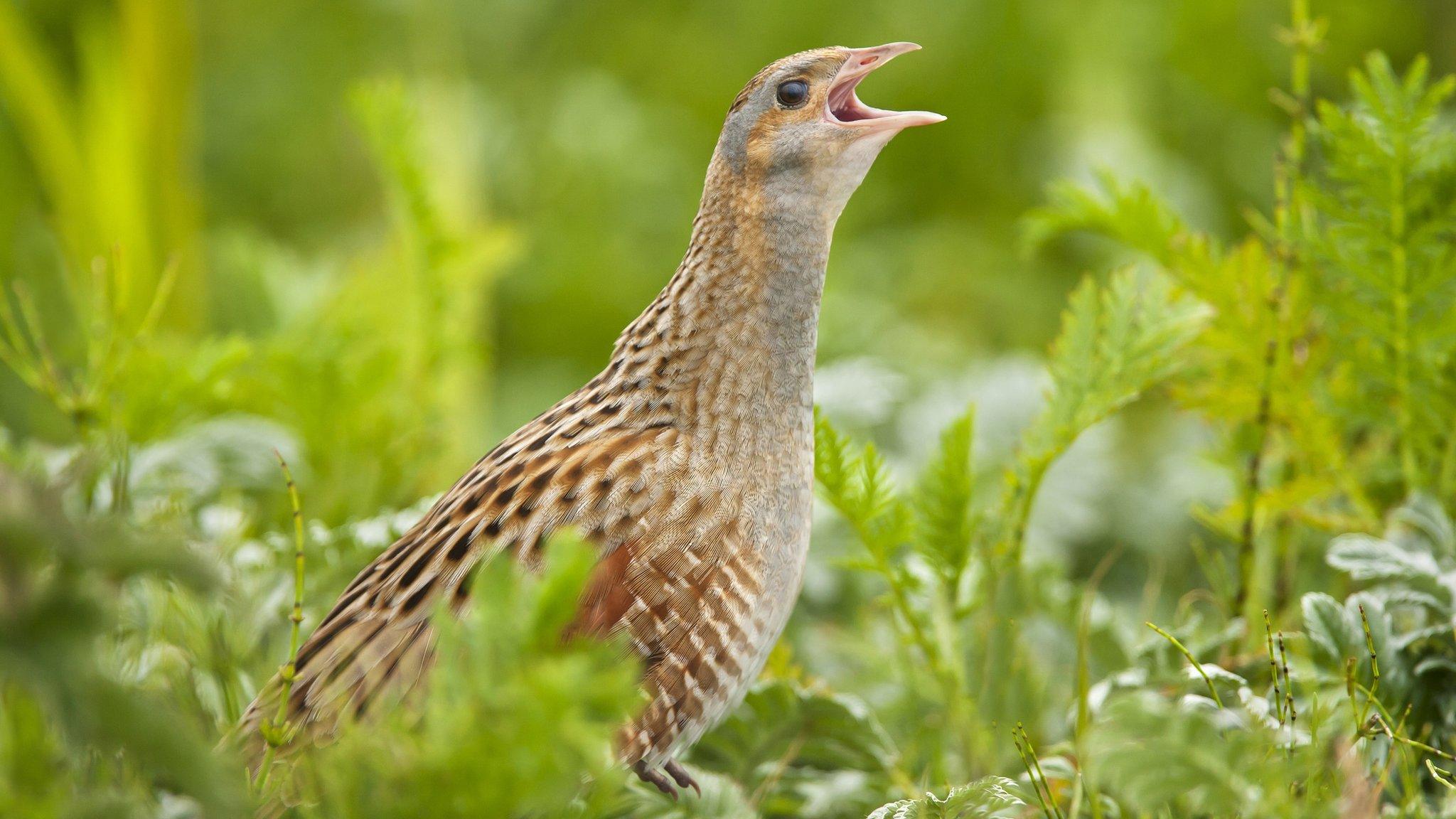
- Published12 August 2011
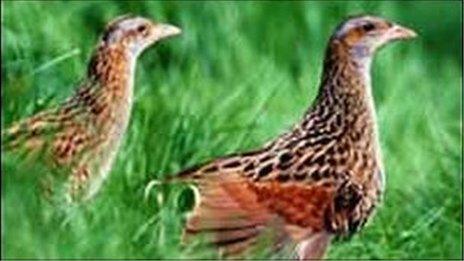
- Published12 May 2017
